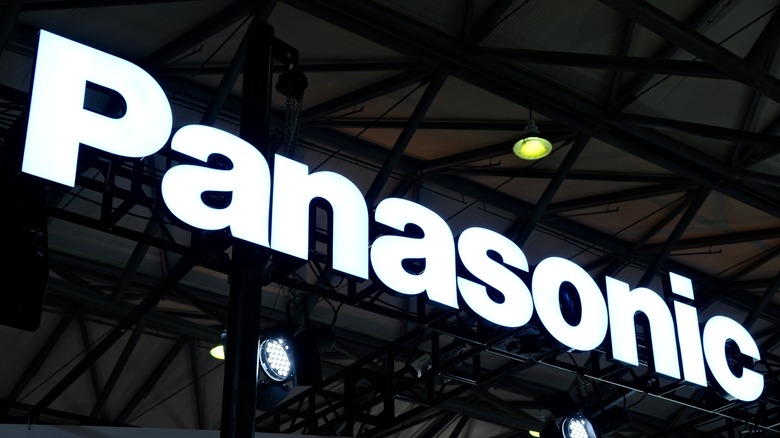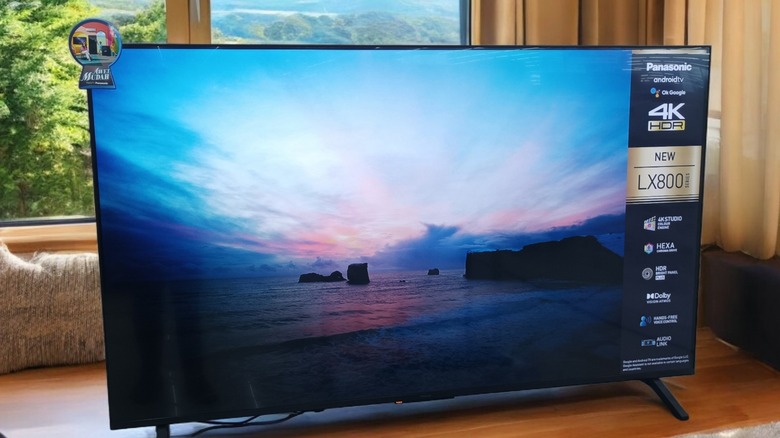Why Panasonic Left (And Re-Entered) The U.S. Television Market
The U.S. is a battleground for global television manufacturing giants, with major TV brands like Samsung, LG, Sony, and Vizio dominating the market with yearly releases of their most up-to-date TV offerings. Newcomers like TCL and Hisense have also made strides in recent years by offering feature-rich television sets at competitive prices. While the current U.S. television market is mostly dominated by Korean and Chinese brands, there was a point when it was a thriving space for Japanese manufacturers.
Up until the mid-2000s, plasma TVs were the trend in the global television market. Around this time, Japanese brands, including Fujitsu, Toshiba, Pioneer, and Panasonic, thrived with this display technology. However, the rapid advancements in the electronics space gave rise to the likes of LCD, LED, and OLED displays and shifted the attention of consumers to the superior picture quality of newer devices. Japanese manufacturers that banked on plasma technology soon found themselves either retreating from overseas markets or shutting down their TV-focused operations, as in the case of Pioneer and Fujitsu.
In 2015, Panasonic, alongside Toshiba, decided to exit the U.S. to focus on its domestic market. As one of those brands that banked big on plasma screen technology, it struggled to keep pace as more consumers shifted to the more efficient but less expensive LCD and LED displays. A year later, the formerly household name in American electronics officially stopped selling its TVs in the country. In the years that followed, Korean and Chinese brands took over and filled the void left by Panasonic and other Japanese TV makers.
Why Panasonic left the U.S. market
Panasonic's decision to leave the U.S. television market stemmed from two main challenges: the declining demand for plasma TVs and fierce competition with other brands. For years, Panasonic was synonymous with plasma technology, but plasma sales nosedived as LCD technology became more affordable and efficient. This shift in consumer preferences hit Panasonic particularly hard, as plasma remained central to its TV lineup while competitors like LG and Samsung diversified into LCDs and OLEDs early on.
The intense competition in the U.S. market further exacerbated Panasonic's struggles. South Korean brands like Samsung and LG, known for their aggressive marketing and innovation, surged ahead by capitalizing on LCD advancements and introducing OLED models. At the same time, Chinese manufacturers like TCL and Hisense, entered the scene, offering budget-friendly TVs that appealed to cost-conscious consumers. These competitors not only filled the technological gaps left by Panasonic but also rapidly gained market share, leaving little room for the Japanese brand to recover.
As it faced dwindling sales, Panasonic made a strategic decision to end plasma TV production in 2014 and shift its focus. Rather than heavily investing in adapting its TV division, the company pivoted to other profitable ventures, such as audio equipment, digital imaging, and industrial solutions. Hence, despite Panasonic's 2016 exit, it remained a major player globally, focusing on other regions where its products, including batteries, lights, and home appliances, were well-received.
The Japanese brand's stateside return
After nearly a decade, Panasonic announced its return to the U.S. television market in September 2024. The relaunch is marked by a new lineup of OLED and mini-LED TVs, signaling Panasonic's commitment to finally embracing cutting-edge technology that appeals to modern consumers.
Panasonic's new lineup includes the flagship Z95A OLED TV, available in 65-inch sizes, and the Z85A OLED series, offered in both 55-inch and 65-inch options. Additionally, the company is introducing the W95 mini-LED series, with sizes ranging from 55 inches to 85 inches. These TVs are designed to compete with premium offerings from Samsung and Sony, featuring Fire TV OS integration and support for ATSC 3.0, also known as NextGen TV. This compatibility aligns with the growing demand for enhanced over-the-air broadcast standards, particularly following LG's exit from the U.S. TV market due to patent disputes.
Panasonic's re-entry reflects a broader strategy to leverage its global partnerships and reputation for quality. According to Yasunari Anan, Executive Vice President of Panasonic Entertainment & Communication Co., Ltd., the U.S. market has remained a key priority for the company. "Today is the end of that long journey and the beginning of a new one to bring new choice to US consumers," he said, emphasizing the collaboration with Amazon's Fire TV as a critical factor of the brand's renewed effort in the market.


